Set up a carrot garden sensory bin for your children to get their hands into! Include it with your other Easter activities for toddlers and preschoolers or have it out just for fun.
You can also grab free printable carrot and rabbit shape cards to go along with this sensory bin. See the bottom of the post.
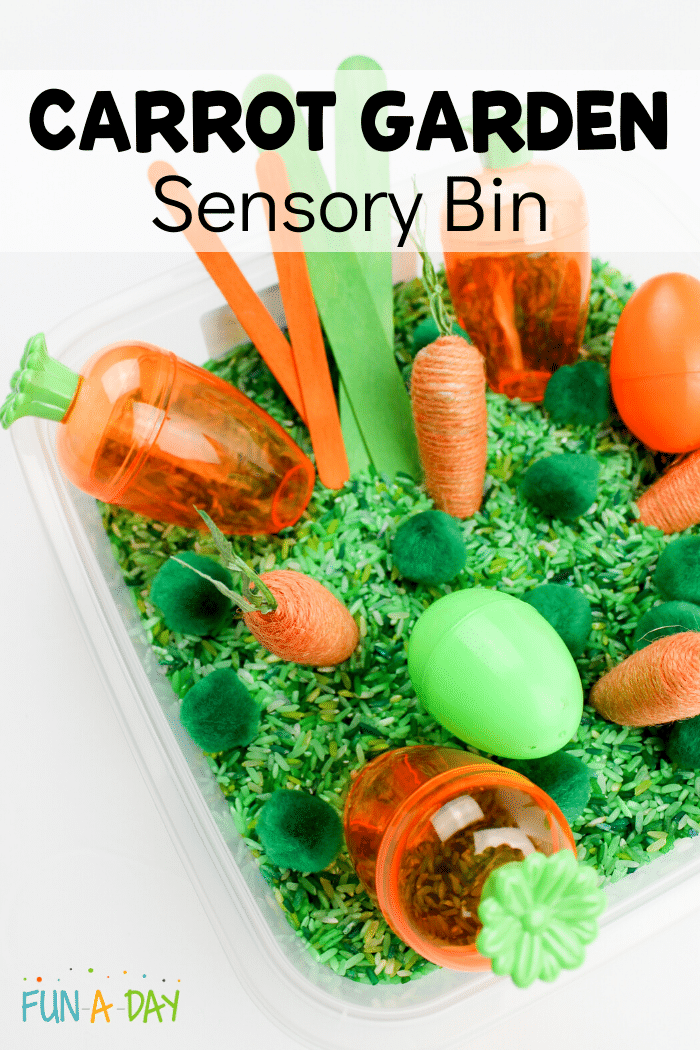
Related: Preschool Garden Theme
Sensory bins can be so soothing for children of all ages. Honestly, even adults can get a lot of benefits from engaging with these bins!
There’s just something about running your hands through a good sensory bin, feeling the materials run through your fingers.
Carrot Garden Sensory Bin
I think this carrot patch sensory play would be the perfect fit with a variety of preschool themes – Easter, farm, vegetables, garden, plants, harvest, etc.
Of course, you can also whip this bin up just for fun too!
Materials for a Carrot Sensory Bin
Keep in mind, you don’t have to use these exact materials in your own carrot bin.
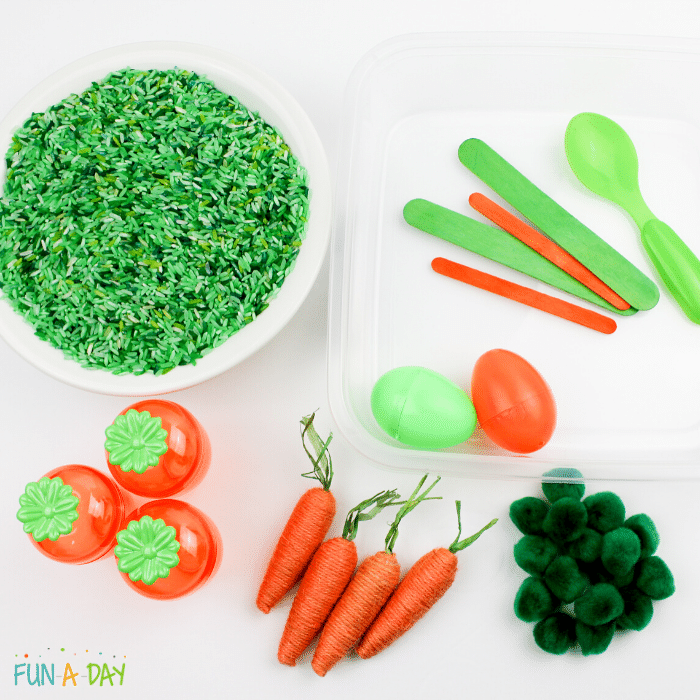
Related: Bunny Shape Mats
Choose the items that you already have on-hand or can find easily. Consider grabbing some items during after-Easter sales if possible. I may get commissions for purchases made through links in this post.
- Green rice (see “recipes” below)
- Empty bin
- Carrot Easter eggs
- Decorative carrots
- Green and orange Easter eggs
- Orange and green popsicle sticks
- Green pompoms
- Scoops or spoons
If you’d rather not use rice, you can always use shredded green paper instead.
How to Dye Rice
There are a couple of different ways to dye rice. Choose your favorite when you’re dyeing the rice for your carrot garden sensory bin.
If you’re using the carrot patch sensory bin with toddlers or children who still put things in their mouths, I suggest you choose the food coloring method.
My favorite way uses liquid watercolors:
- Pour rice into a plastic bin or baggie.
- Squirt in some liquid watercolors, seal the bin/baggie, and mix.
- If you need to, add some more liquid watercolor and shake it up again.
- Spread the rice on a tray (lined with paper towels or wax paper) to dry.
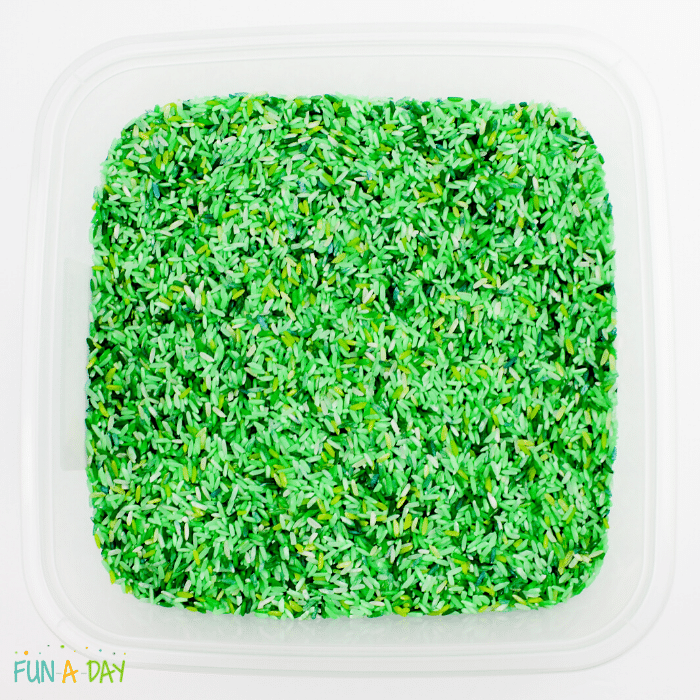
Related: Spring Activities for Preschoolers
The more well-known method uses food coloring:
- Pour about two cups of rice into a plastic baggie or a reusable plastic container.
- Add two teaspoons of vinegar and up to 30 drops of green food coloring. Add more to make darker.
- Seal the baggie or container and mix well.
- Spread out to dry on a paper towel lined tray.
One fun suggestion – make the green rice in batches so you can have a variety of shades. If possible, have the children help you with this.
Carrot Garden Sensory Bin Setup
Once your green rice is fully dry, it’s time to set up your carrot sensory invitation.
If you’re using this bin with a larger group of kids, I suggest using a bigger bin. If it’s just one child, use a smaller container or tray.
Pour the rice into a bin. Have the kids help, and spread the rice to make an even layer.
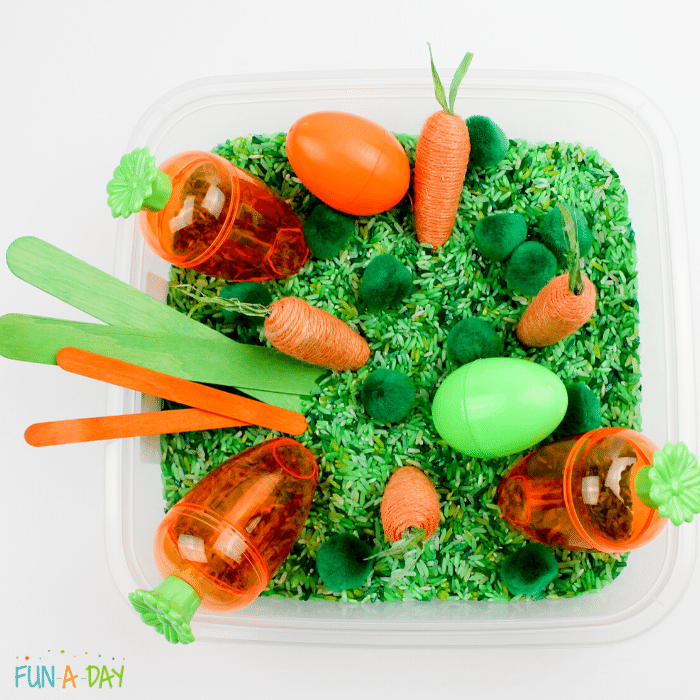
Related: Chicken Sensory Bin
Add the carrot-shaped Easter eggs and decorative carrots to your bin. Space them apart a bit so they’re pleasing to the eye. Or, again, let the kids add the pieces as they see fit.
Next, place the pompoms and regular Easter eggs to the rice bin.
Place the craft sticks and spoons/scoops into the bin, unless you’d rather place them next to it.
Playing in the Carrot Patch Bin
Once the sensory tub is all set up, it’s time to let the children get in there and PLAY!
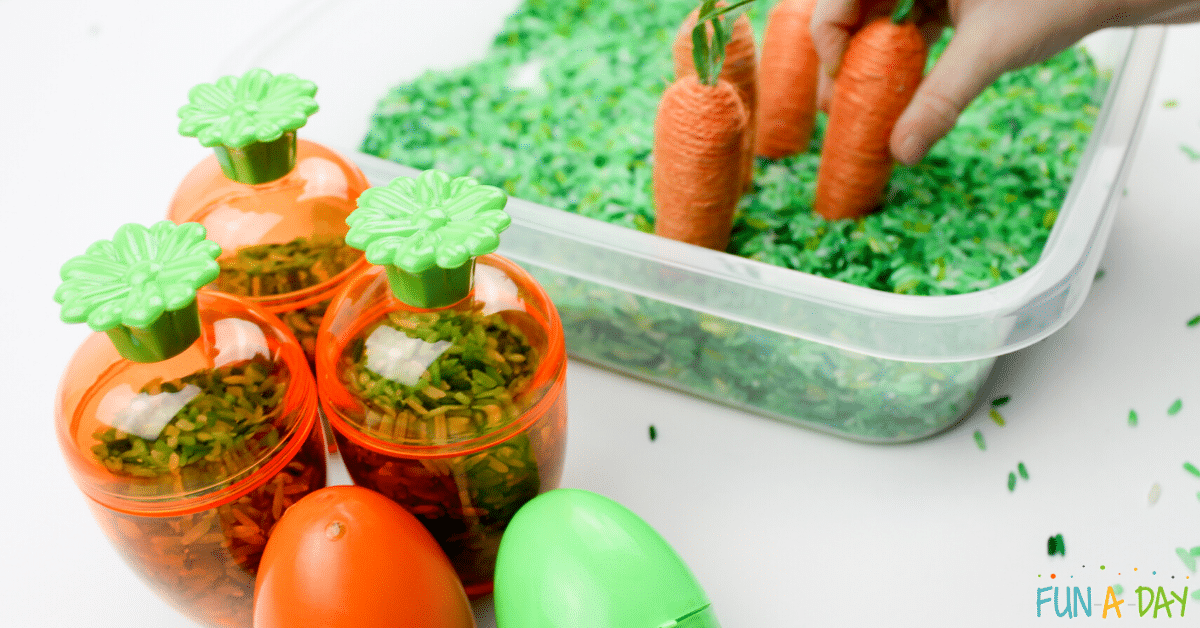
Related: Rabbit Sensory Bin
Children are likely to interact with the bin in different ways, which should be expected.
You might see children:
- Just using their hands to mix the bin up.
- Scooping and pouring the rice.
- Filling the eggs with rice, closing the eggs up, and then shaking the eggs to explore sound.
- Fill and emptying the eggs over and over.
- “Planting” the carrots in the “grass” and hen harvesting those carrots.
- Burying the pompoms . . . even pretending they’re carrot seeds being planted.
- Digging into the rice with the craft sticks and spoons.
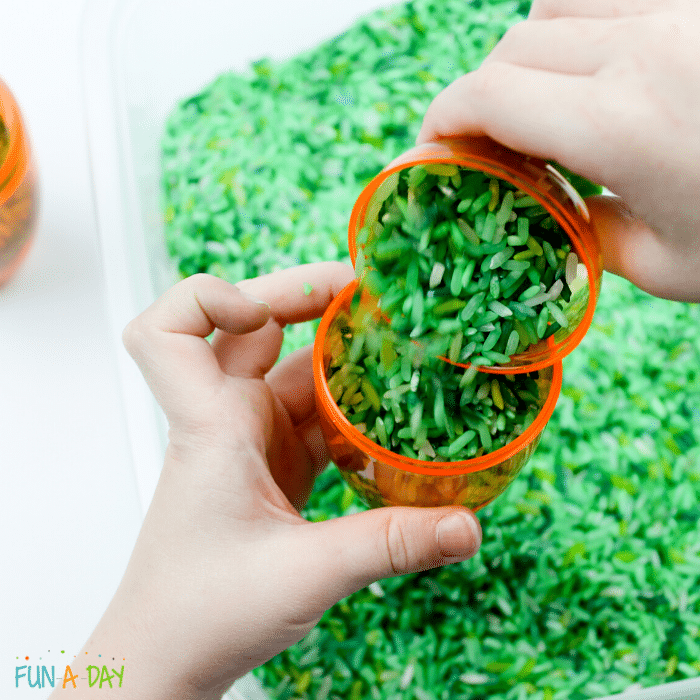
Related: Easter Sensory Bottles
Just know that the kids are learning SO MUCH as they play in the carrot garden sensory bin! Here are a few things they will explore:
- Volume
- Capacity
- Sound
- Sight
- Hearing
- Planting, gardening, harvesting
- Gross motor skills
- Fine motor skills
And that list isn’t an exhaustive one!
When you try this, I would LOVE to know which part of the carrot patch bin appeals to your children/students the most.
Leave me a comment or two below to let me know!
Preschool Teacher Resources
Preschool Teacher 101 has some wonderful ready-to-go resources to help you as you teach preschool. Including full lesson plans to complement this carrot garden sensory bin.
Click on the images below for more information. If you’re a preschool teacher looking to make life easier on yourself, be sure to take a look at the membership options.
You can also find us on Teachers Pay Teachers.
Free Printable Carrot and Rabbit Shape Cards
As I mentioned above, I made some shape cards to go along with this fun carrot garden sensory bin.
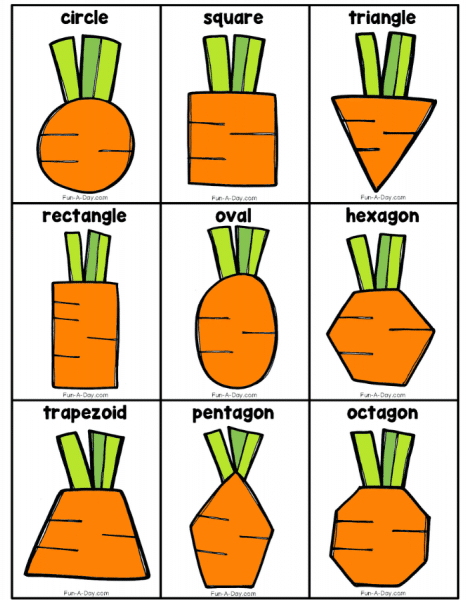

They’re available to members of Fun-A-Day’s free email community, so fill out the form below if that’s you! If not, you can join and grab the printable as a welcome gift.
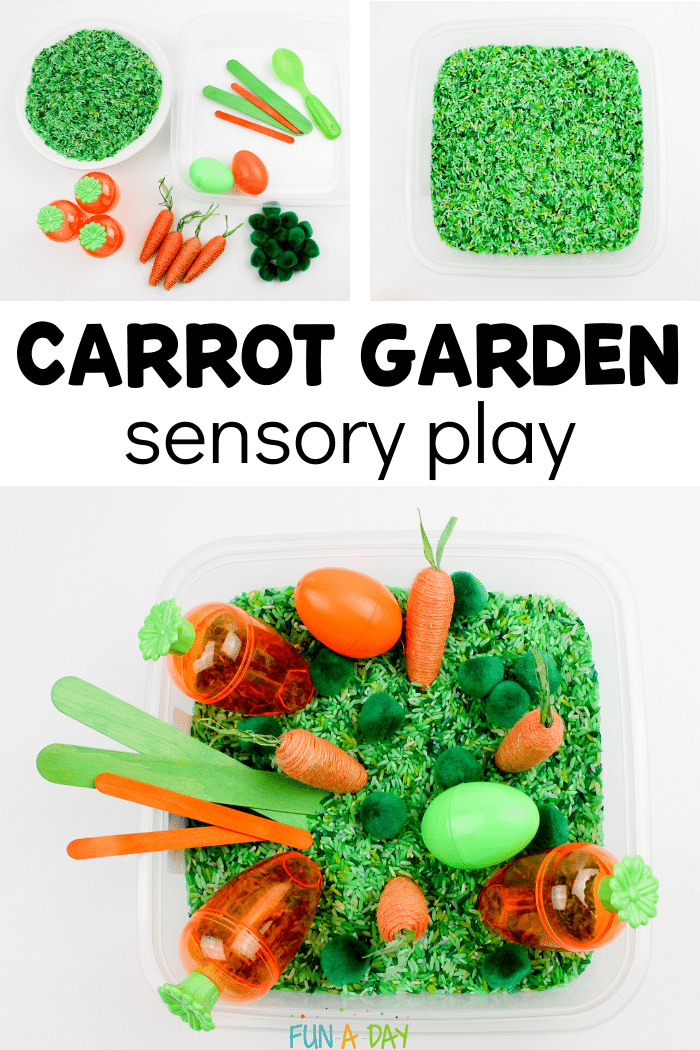
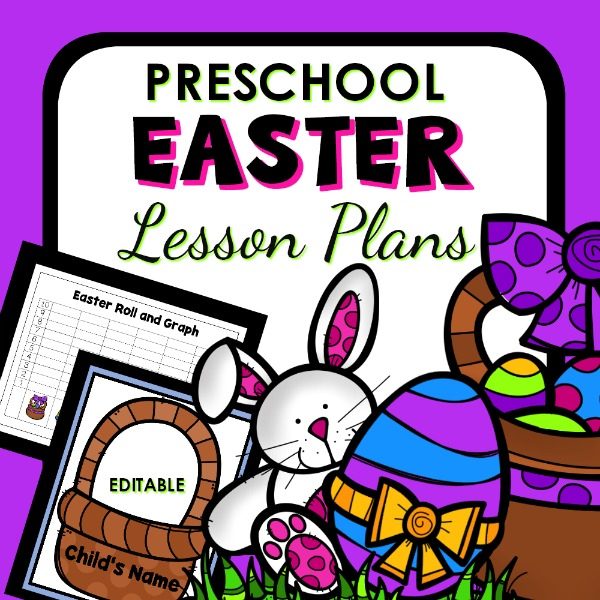
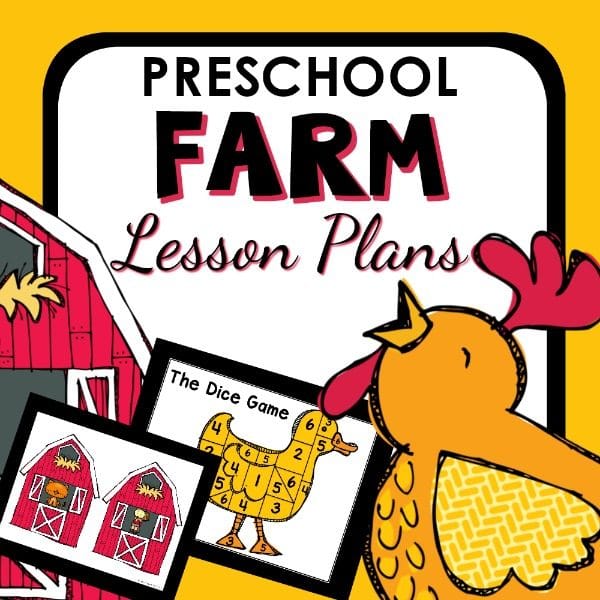
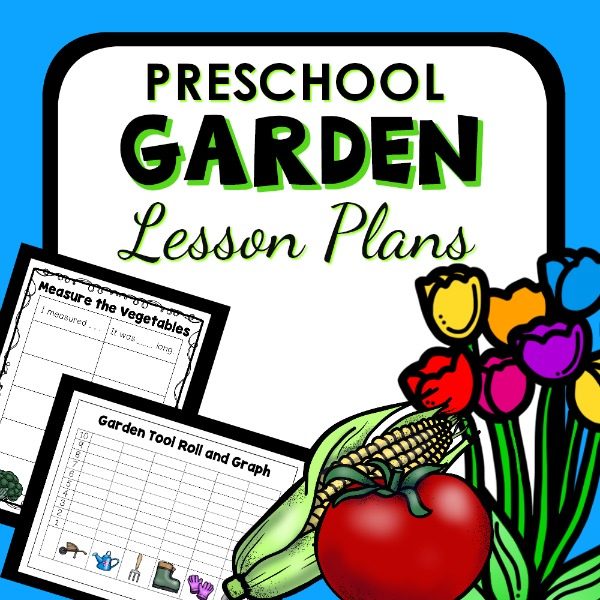
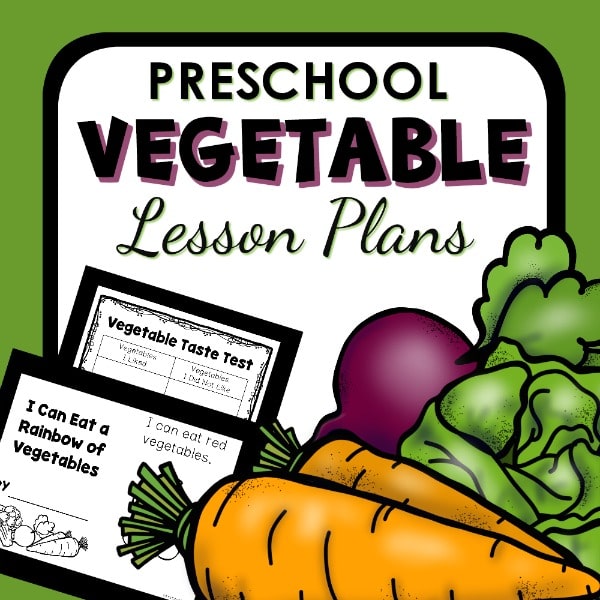

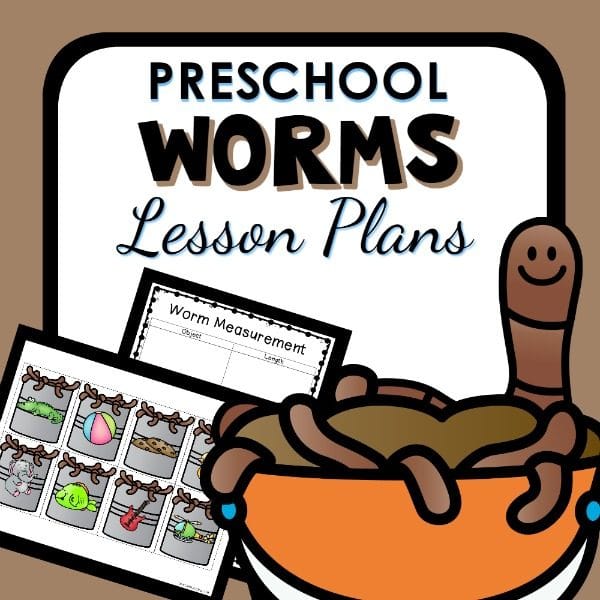
Your ideas are a wonderful and provide relief or a much needed break from screen activities. I am a pre-K teacher and would like to share your ideas with my class only. Clarify your copyright rules and how can I share your ideas legally?
You can definitely send their families the links to the ideas you want to share! Feel free to email me (mc@fun-a-day.com) if you have any more questions. 🙂